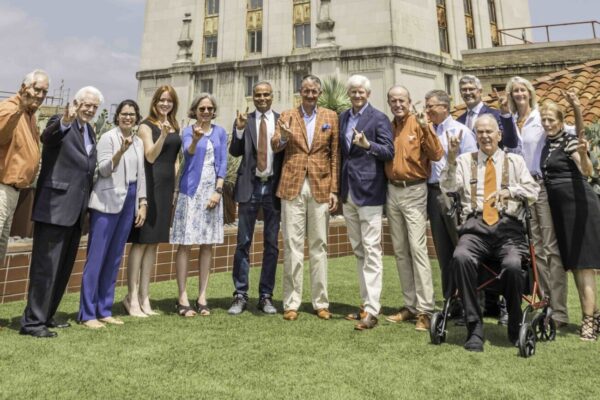AUSTIN, Texas — A foundation formed 28 years ago to attract a higher education center to the city of Taylor, just northeast of Austin, has given The University of Texas at Austin a 68-acre tract that will be developed into The University of Texas at Austin – Taylor Center. The property is situated near Samsung Austin Semiconductor’s new 6 million-square-foot chip fabrication plant and will catalyze the region’s growth as a national leader in the semiconductor supply chain.
“Advancing innovation, growing education and cultivating leadership in the semiconductor space is a major area of focus for The University of Texas, and we are excited to have a presence in the burgeoning Taylor community and the opportunity to further shape the expanding footprint of the semiconductor ecosystem in Central Texas,” said President Jay Hartzell. “We are grateful to the Temple College at Taylor Foundation for welcoming UT into its vision for educational and economic opportunity in the region and to the City of Taylor for its commitment to supporting one of the nation’s most critical needs.”
The undeveloped land, adjacent to Taylor High School on U.S. Highway 79, is a gift from the Temple College at Taylor Foundation, a nonprofit organization established by Taylor residents to provide higher education in the city. Its proximity to Samsung’s new $17 billion facility makes it a natural fit for UT initiatives such as the Texas Institute for Electronics (TIE), which is considering use of the site for training and research with semiconductor partners.
UT has a rich history as a leader in America’s semiconductor industry dating back to the formation of Sematech in the 1980s. The Texas Legislature has invested $552 million in TIE to better position the region to compete for federal CHIPS Act funding. TIE is using some of the state funds to refurbish existing fabrication plants at the original Sematech site on Montopolis Drive and at UT’s J.J. Pickle Research Campus on Burnet Road.
“The Temple College at Taylor Foundation has embraced a thoughtful evolution of ideas that culminated in the establishment of The University of Texas at Austin – Taylor Center,” said James Bartosh, president of the foundation and a UT alumnus. “UT’s and Samsung’s investments in Taylor will result in the advancement of education, research and quality of life in Central Texas.”
UT will work with Taylor community and industry partners to determine the highest-impact uses of the Taylor Center to grow and support Central Texas’ semiconductor workforce and supply chain. The University has assembled a site task force and is interviewing leaders across campus to determine which programs would be best fits for the new Taylor Center.
“The City of Taylor is thrilled to welcome The University of Texas at Austin,” said Mayor Brandt Rydell. “UT’s presence in our vibrant, growing community will provide even more opportunities for future generations and help solidify the city’s place as a center for progress and enrichment in Williamson County and the state of Texas.”
“If UT can change the world with Forty Acres, one can only imagine the impact the University can make with our gift of 68 acres,” said Louis Hughes, a board member of the foundation and UT alumnus.




